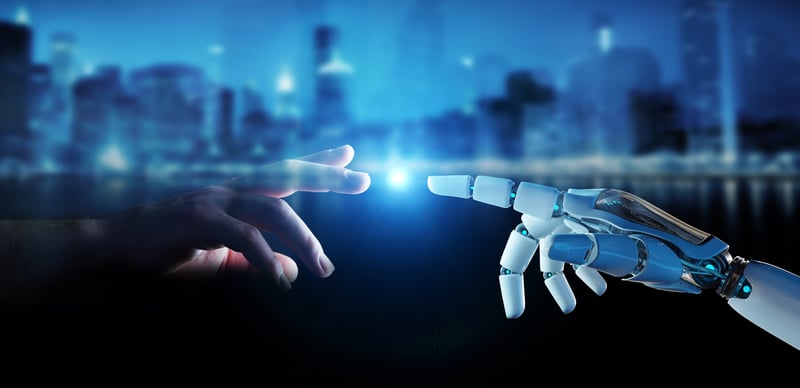
There was a time when wellness was a hands-on business. Nowadays, it’s easy to get lost in a sea of mobile apps, wearables, e-learning platforms and self-directed coaching. It’s all about technology and big data. It’s about how artificial intelligence is reshaping the HR space. In this race toward the latest technologies, we are quickly losing the touch and feel that is so critical when it comes to wellness.
In the land of hub and spoke style portals that serve as an online vending machine for a multitude of wellness flavors, it is starting to feel like something might be missing. Can wellness be effectively delivered in the same way entertainment is channeled through Netflix? Or do we need something more?
If you go back to the early days – or just a few years ago – wellness was a high-touch business, dominated by onsite biometric screenings, health fairs, lunch and learns and in-person or telephonic coaching. Real people creating trust and supporting healthy lifestyle changes.
But Health 2.0 ushered in a brave new world, complete with a proliferation of new vendors offering technology-based approaches and an avalanche of health and medical apps. Almost overnight, there was an invasion of technology in the wellness space.
Were we better off then, or now? Which is better, a HIGH-TOUCH, or a HIGH-TECH approach? Can wellness be a self-serve business, or does it require the nuanced interactions that are only achievable through real people?
Legacy wellness programs were hugely inefficient and unable to effectively deliver personalized information at scale across populations. Wellness 2.0 can be cold and underwhelming, failing to establish the deep, long-term relationships required to help individuals overcome their biggest health challenges and most unhealthy habits. After all, it really looks cool when that virtual reality equipment is hanging in the relaxation room. But what if it just hangs there? And how are you measuring the impact if someone does put it on?
Research shows that employees actually prefer a mix of interaction, some digital and some physical. Some artificial and some real. Even digital-first platforms must incorporate ways to create interactions between and among people. Clients need that too. Today’s off-the-shelf technology solutions can be short on service. Employers need a strategic partnership to successfully execute a wellness program. They need an experienced person or team to collaborate and strategize with as they support their populations.
Technology can facilitate all kinds of magical, wonderful outcomes in wellness. But it must be backed by human connections. The smartest approaches to wellness and wellbeing strike the delicate balance between automation and affection, between tech and touch. We don’t actually have to choose. We can have both. In fact, we need both.
Recently, Harish Natarajan, a grand finalist in the World Debating Championships publicly battled an IBM computer that is the company’s first artificial intelligence system designed specifically to debate humans.
He won. But it was close. Afterward, the debate champ said that if you combined the skills of the IBM machine with those of a human, it “could be incredibly powerful.”
The same goes for wellness. If we look at technology as a fix-all and a plug-and-play for supporting people in their health journeys, we fill come up short of victory. But if we appropriately leverage technology to amplify the impact of personal touch across populations, the potential is truly unlimited.
But what does this look like in reality? CHC Wellbeing has long been committed to providing a high touch AND high-tech approach. Here are a few examples of how we ensure our clients receive the best of both worlds:
 Flexible Tools– We offer clients a mix of high-touch capabilities, including onsite screenings and education, as well as 1-on-1 health coaching, while also providing simple but robust online tools, such as a member portal and reward platform to create efficiencies in wellness outreach. These tools are configured to meet the specific needs of an employer’s population.
Flexible Tools– We offer clients a mix of high-touch capabilities, including onsite screenings and education, as well as 1-on-1 health coaching, while also providing simple but robust online tools, such as a member portal and reward platform to create efficiencies in wellness outreach. These tools are configured to meet the specific needs of an employer’s population.
 Personal Technologies – Our portal is engineered to offer both self-directed activities for individuals as well as facilitated group challenges, walking activities and ongoing opportunities to connect with other participants.
Personal Technologies – Our portal is engineered to offer both self-directed activities for individuals as well as facilitated group challenges, walking activities and ongoing opportunities to connect with other participants.
 Dedicated Strategists – Every client is assigned an account manager who is versed in wellness and wellbeing and can assist in developing strategic, long-term programs, driving engagement and supporting ongoing culture-building activities in partnership with internal wellness teams.
Dedicated Strategists – Every client is assigned an account manager who is versed in wellness and wellbeing and can assist in developing strategic, long-term programs, driving engagement and supporting ongoing culture-building activities in partnership with internal wellness teams.
How are you ensuring a balanced approach to wellness that marries high touch and high tech?





